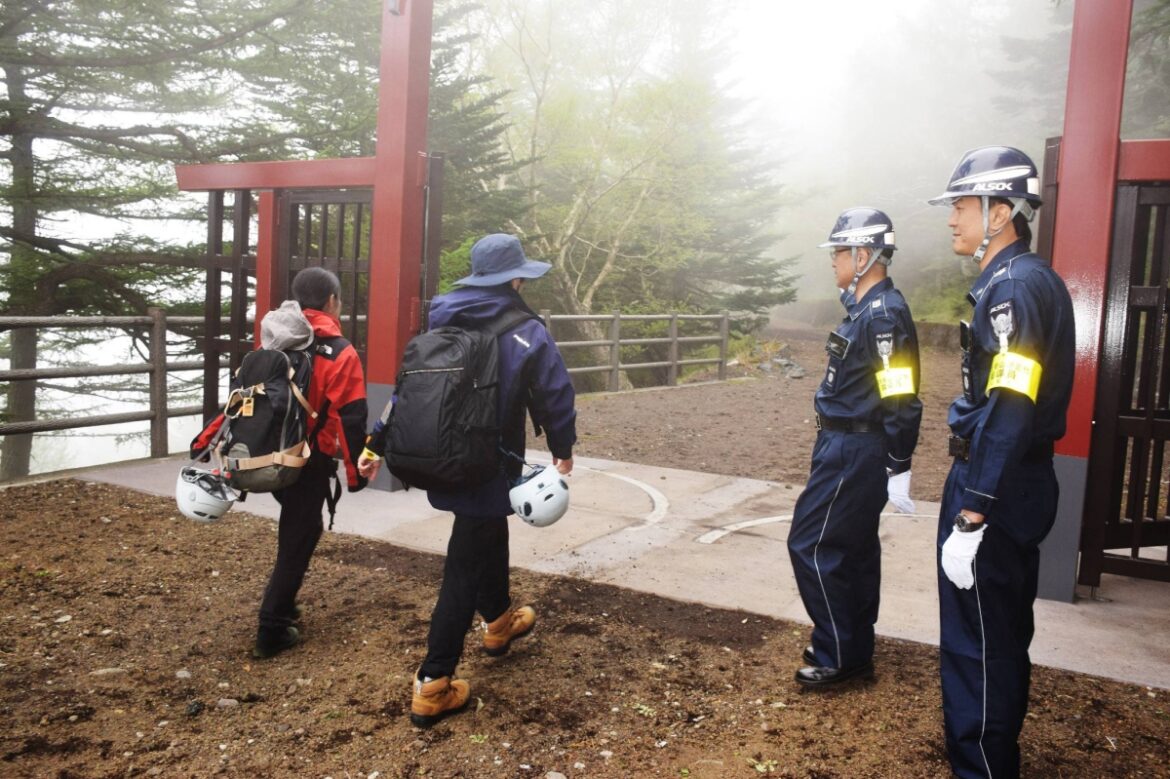The climbing season for Mount Fuji kicks off in phases from Tuesday with all routes — from both Shizuoka and Yamanashi prefectures — charging an entrance fee of ¥4,000 ($28) to combat overtourism and make the experience more sustainable.
This is the first time that all four trails up the iconic mountain are charging the same entrance fee.
Last year, climbers had to pay ¥2,000 to scale Mount Fuji via the Yoshida trail, which originates in Yamanashi, during the climbing season, which spans from July to early September, while those making the trek through three other trails originating in Shizuoka did not have to fork out anything.
For decades, Mount Fuji has been a symbol of natural beauty and spiritual significance, drawing thousands of visitors from around the world each year. But along with the fame came a flood of climbers, which caused congestion on the trails and increased safety risks due to those who showed up for the climb ill-prepared.
The four trails will be closed from 2 p.m. to 3 a.m. every day to prevent climbers from beginning their hikes late. Shizuoka’s three trails don’t have a daily cap on the number of climbers, but the Yoshida trail does — the gate at its fifth station will close once 4,000 climbers have passed through each day.
This is being done to prevent congestion as well as what is described as “bullet climbing,” which involves climbers trekking to the summit throughout the night without taking a break or booking a stay at a mountain lodge, which can be dangerous. “Bullet climbers” have been associated with other inappropriate behaviors such as the blocking of trails, the hogging of bathrooms at mountain huts and causing noise pollution.
Climbers can either make reservations and pay the entrance fee online in advance, or pay at the fifth station on the day of the climb. Even with reservations, climbers still need to pass the fifth station of each of the trails by 2 p.m. Those who have booked accommodation at the mountain huts will not be subjected to the time constraints.
Those without sufficient knowledge or experience in mountain climbing are advised to be accompanied by a mountain guide. Climbers who do not have the necessary climbing equipment may be barred from using the trails.
In 2024, a total of 204,316 individuals climbed Mount Fuji, down by nearly 8% from 221,322 in 2023, according to the Environment Ministry.
The 3,776-meter Mount Fuji, which straddles the border of Yamanashi and Shizuoka prefectures, was registered as a UNESCO World Heritage site in 2013. It is not the only mountain in the world that charges climbers an entrance fee.
For instance, Nepal has for nearly a decade charged a permit fee of $11,000 to climb Mount Everest — the tallest mountain in the world — during the peak climbing season. This fee is set to be increased to $15,000 from September, BBC reported.
According to the official website for Mount Fuji, the Fujinomiya trail in Shizuoka Prefecture is the shortest trail but has the steepest incline. The Gotemba route in the same prefecture has the longest distance and the greatest elevation distance to the summit.
Meanwhile, the Subashiri route is known for its beautiful sunrise views. Closer to the summit, the trail merges with Yamanashi Prefecture’s Yoshida trail, a route popular among beginners.


AloJapan.com